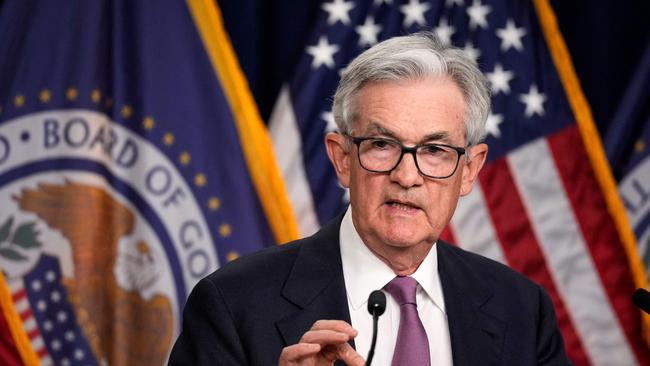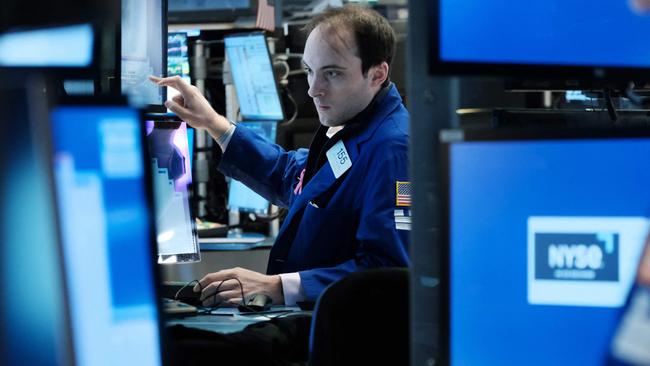US Fed holds rates steady, signals two more hikes
US Fed chairman Jerome Powell has paused rates between 5 per cent and 5.25 per cent ‘in light of how far we have come in tightening policy, the uncertain lags … and potential headwinds’.

US Federal Reserve officials agreed to hold interest rates steady after 10 consecutive increases, but signalled they are leaning toward raising them next month if the economy and inflation don’t cool more.
Most of them pencilled in two more rate increases this year and lifted their expectations for growth and inflation in projections released on Wednesday (Thursday) after their two-day policy meeting.
In a statement, the Fed said the decision to maintain the benchmark federal-funds rate in a range between 5 per cent and 5.25 per cent, a 16-year high, might be short-lived.
“Holding the target range steady at this meeting allows the committee to assess additional information,” the committee said in the statement. Officials approved the rate decision unanimously.
After holding the fed-funds rate near zero following the Covid pandemic, the Fed had raised the rate at every meeting since March 2022 by a cumulative 5 percentage points, the most rapid series of increases since the 1980s.
Officials slowed their increases this year, lifting the rate by a quarter percentage point at their past three meetings, most recently in May.
Others turned less confident about the need to keep raising rates, however, due to the fallout from three bank failures since March, which could lead to a credit crunch as banks face higher funding costs.

The Fed held rates steady “in light of how far we have come in tightening policy, the uncertain lags in which monetary policy affects the economy, and the potential headwinds from credit tightening,” chair Jerome Powell said at a news conference.
“It’s common sense to go a little slower,” Powell said. “That gives us more information to make decisions. We may try to make better decisions. It allows the economy a little more time to adapt as we make our decisions going forward.”
Powell and some colleagues had hinted at a potential compromise last month in which officials would forgo a rate rise in June while leaving open the prospect of raising rates at their July 25-26 meeting.
On Wednesday, officials revised up their projections for economic growth and inflation.
They also marked down their estimates of how high the unemployment rate would rise this year.
The projections showed 12 officials think rates will need to rise to between 5.5 per cent and 5.75 per cent this year or even higher, implying two additional quarter point increases at any of four meetings later this year.
Another four officials projected rates would need to go up by a quarter percentage point. Just two anticipated rates could be held steady for the rest of the year.
“Nearly all committee participants expect that it will be appropriate to raise interest rates somewhat further by the end of the year,” Powell said Wednesday.

Powell has kept the committee united since inflation surged two years ago, with only one dissent – from a reserve bank president who retired earlier this year – since the central bank began unwinding its pandemic-era stimulus policies at the end of 2021.
The Fed fights inflation by slowing the economy through raising rates, which causes tighter financial conditions such as higher borrowing costs, lower stock prices and a stronger dollar. Banking stresses are expected to further tighten financial conditions, but the magnitude of any credit crunch is hard to predict and might not be apparent for months.
The rate decision Wednesday suggested that while Fed officials are still troubled by high inflation, they are changing their tactics to better manage the risk of raising rates too high or too fast.
The Fed’s preferred inflation gauge, the personal-consumption expenditures price index, rose 4.4 per cent in April from a year earlier, down from 5.4 per cent in January. Core prices, which exclude volatile food and energy prices, have been more stubborn. On a year-over-year basis, they rose 4.7 per cent in April. The Fed targets 2 per cent inflation over time.
The housing market – one of the sectors hardest hit initially by last year’s rate increases – has seen some improvement, illustrating how difficult it has been for the Fed to slow the economy and to balance supply and demand.
The S&P 500 in recent days has edged up to new 2023 highs, powered by big tech stocks that slumped last year. Assuming the economy unfolds in line with their projections, officials anticipated inflation would come down enough next year so that they could reduce the fed-funds rate by the end of 2024 to around 4.6%, roughly a half percentage point below its current level.




To join the conversation, please log in. Don't have an account? Register
Join the conversation, you are commenting as Logout